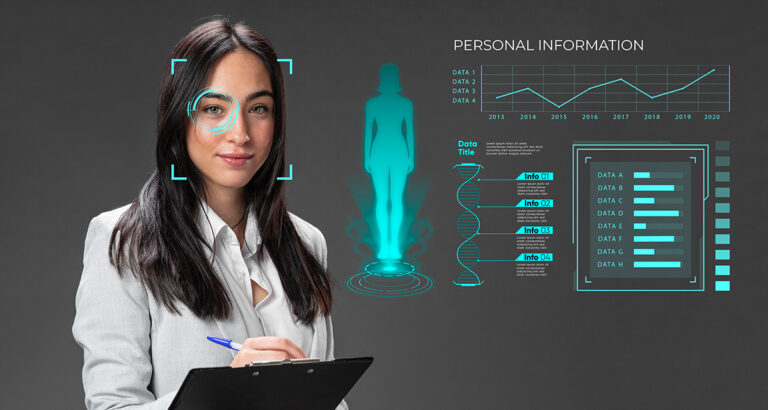A Crisis Beyond the Individual
Burnout among healthcare professionals, particularly doctors, has emerged as a silent epidemic an emotional, psychological, and physical crisis that strikes at the very core of the medical profession. While the image of the overworked physician is far from new, what distinguishes today’s crisis is the mounting evidence that burnout is no longer a matter of personal resilience or individual failing. It is, more importantly, a reflection of deeper systemic dysfunctions embedded in the structure and delivery of modern healthcare. This is not just a problem of tired individuals; it is a system-level failure that affects clinical outcomes, workforce sustainability, and even societal health.
Burnout Defined and Measured
Burnout, as defined by the World Health Organization, is an occupational phenomenon resulting from chronic workplace stress that has not been successfully managed. It is characterized by feelings of energy depletion or exhaustion, increased mental distance from one’s job, and reduced professional efficacy. Globally, the magnitude of the problem is staggering. Research across multiple countries and settings consistently reports burnout rates ranging from 40 to 60 percent among physicians, with some frontline specialties experiencing even higher prevalence. In intensive care, emergency medicine, and primary care fields often seen as the backbone of the healthcare system burnout has become endemic.
The implications extend far beyond individual distress. Physician burnout is now associated with increased medical errors, reduced patient satisfaction, early retirement, higher turnover, and significant financial costs to healthcare systems. A study by the American Medical Association and the Mayo Clinic estimated that burnout contributes to $4.6 billion in annual costs due to physician turnover and reduced clinical hours in the United States alone. And this is just one country. The global economic and human toll is difficult to quantify but impossible to ignore.
From Wellness to Systemic Change
While individual-focused interventions like mindfulness training, yoga, and resilience workshops have gained popularity, they often overlook the more critical reality: healthcare professionals are burning out not because they are weak, but because the systems in which they operate are deeply flawed. The call to action must shift from improving the individual to transforming the system. This distinction is critical. When we place the burden of well-being on individual doctors, we fail to address the root causes. It is like asking firefighters to meditate more while their station is on fire.
The EHR Burden and Loss of Human Connection
One of the most significant contributors to burnout is the rise of bureaucratic and technological intrusions into the physician-patient relationship. While the digitization of healthcare has brought several efficiencies, the widespread adoption of electronic health records has created unintended consequences. Studies from the United States and Europe have found that doctors now spend nearly twice as much time interacting with computers as they do with patients. Documentation demands, poorly designed user interfaces, and regulatory compliance tasks have turned many physicians into data entry clerks.
This erosion of meaningful clinical interaction lies at the heart of what many describe as moral injury a profound sense of conflict between what they are trained to do and what the system demands they prioritize. The emotional dissonance of knowing what a patient needs and being unable to provide it due to time constraints, administrative barriers, or systemic inefficiencies is a deep wound that eats away at the professional spirit.
Time Pressures and Toxic Metrics
Time pressures and productivity metrics further exacerbate this emotional disconnect. In fee-for-service models or target-driven public systems, doctors are increasingly evaluated not on the quality of care, but on volume and speed. Consultation times are shrinking, while complexity is increasing. A 15-minute consultation is expected to address a patient’s multiple chronic conditions, mental health, and social circumstances all while the physician manages documentation and checks quality boxes.
The cognitive load required to manage multimorbidity, patient expectations, and rapidly evolving medical knowledge is overwhelming, especially when coupled with administrative quotas. In such environments, even the most committed professionals begin to feel disillusioned and helpless. The constant feeling of being behind, of never doing enough, is a psychological burden that wears down even the most resilient clinician.
Organizational Culture and Leadership
Addressing burnout at a systemic level requires acknowledging that workplace culture and organizational structure play a decisive role in shaping clinician well-being. Institutions that foster a culture of inclusion, collaboration, and psychological safety are consistently found to have lower rates of burnout. Leadership matters deeply. Studies from institutions such as the Mayo Clinic have demonstrated that physicians working under engaged, empathetic, and communicative leaders report significantly lower burnout scores.
Importantly, these leaders are not just supportive in word, but indeed actively advocating for workload balance, fair compensation, flexible scheduling, and clinician involvement in decision-making. In contrast, hierarchical and opaque leadership styles exacerbate feelings of powerlessness and detachment among physicians. Medical leadership should not be an extension of bureaucratic control but a channel for empowering those who provide care.
Frameworks That Work
There is growing momentum around structured frameworks to address clinician well-being. The Stanford WellMD Model, for example, emphasizes three key domains: personal resilience, culture of wellness, and efficiency of practice. By integrating workflow redesign, promoting team-based care, and eliminating low-value tasks, institutions have shown that it is possible to reduce burnout while enhancing patient outcomes.

Similarly, the UK’s NHS Practitioner Health Programme and the Canadian Physician Wellness Initiative provide scalable, system-level interventions that blend psychological support with organizational reform. These programs recognize that physicians, like patients, need a care infrastructure a network that supports, sustains, and strengthens them through their professional journey.
The Role of Policy and Medical Education
At the policy level, there is an urgent need for health systems and governments to move beyond reactive measures and invest in structural changes. National licensing boards, insurance companies, and regulatory bodies often impose documentation requirements that are misaligned with frontline realities. Revisiting these policies through the lens of clinician experience is essential.
Moreover, medical education must begin to prepare doctors not only for clinical excellence but for sustainable practice in modern health systems. Training future physicians to work in interdisciplinary teams, to leverage digital tools effectively, and to advocate for system change is essential for long-term reform. The hidden curriculum that valorizes overwork and stoicism must be replaced by one that encourages collaboration, reflection, and self-care.
Technology – Problem or Solution?
Technology, while currently a burden in many contexts, also holds promise as part of the solution. Artificial intelligence, when thoughtfully integrated, can automate routine documentation, streamline diagnostics, and assist in clinical decision-making freeing up time for meaningful patient engagement. However, technology must be co-designed with clinicians, not imposed upon them. Without such collaboration, even the most sophisticated tools can deepen frustration and disengagement.
Emerging tools like AI scribes, clinical decision support algorithms, and ambient voice recognition offer a glimpse into a future where documentation is effortless and physicians can reconnect with the art of medicine. But this future will only be realized if clinicians are active participants in its design.
Equity and Inclusion in Physician Well-being
Burnout also has a pronounced impact on equity within the medical profession. Female physicians, physicians from minority backgrounds, and those working in underserved regions often report higher levels of stress and lower access to institutional support. Solutions must be inclusive and sensitive to these disparities.
Promoting diversity in leadership, addressing harassment and discrimination, and ensuring equitable resource allocation are critical steps in building a supportive ecosystem for all healthcare professionals. A one-size-fits-all approach to well-being is not sufficient. Tailoring interventions to meet the needs of diverse physician populations is essential.
Moving Beyond the Hero Narrative
Cultural shifts in how society views the medical profession are also needed. The hero narrative, which idealizes self-sacrifice and glorifies overwork, is both harmful and unsustainable. While gratitude and respect for healthcare workers are important, they must not come at the cost of humanity. Doctors are not immune to fatigue, fear, or frustration. They too deserve systems that protect their mental health, value their time, and affirm their purpose.
This narrative must be replaced with one that acknowledges doctors as skilled professionals and complex human beings deserving of support, empathy, and care. Only then can we begin to dismantle the stigma around seeking help and foster environments where vulnerability is met not with judgment but with solidarity. To be clear, individual wellness initiatives are not without merit. Peer support programs, confidential counseling, mentorship networks, and protected time for reflection can all contribute meaningfully to well-being. However, these must be embedded within a broader institutional commitment. When wellness is treated as a checkbox or an optional extra, it only adds to the burden. True change requires alignment across every level of the system from hospital boards and department heads to national policies and global norms.
Every hospital, clinic, and academic center must make physician well-being a strategic priority. This means dedicating resources, tracking metrics, and continuously evolving based on feedback. Just as patient safety became a core focus in the past decade, clinician well-being must become a central pillar of healthcare quality.
A Global Awakening
There are reasons for optimism. Around the world, pockets of innovation are emerging. In the Netherlands, some hospitals have adopted flexible, clinician-led scheduling systems. In Australia, burnout monitoring is now part of quality improvement programs. In India, telehealth platforms are being redesigned to prioritize clinician experience. And in the United States, several academic centers are piloting AI-based scribes to reduce documentation time.
These are not isolated efforts they are signals of a global awakening to the fact that clinician wellness is not a luxury, but a necessity. These innovations, while localized, have global implications. They prove that change is not only possible, but already underway. The COVID-19 pandemic, for all its devastation, has also served as a wake-up call. It has exposed the fragility of our health systems and the toll of chronic neglect. But it has also illuminated the extraordinary resilience, dedication, and adaptability of healthcare workers. Now, as the world moves from crisis to recovery, there is an opportunity to reimagine the structures that underpin medical practice.

We must resist the urge to return to a broken normal. Instead, we must build systems that honor the dignity of healthcare work, that recognize the person behind the professional, and that create conditions in which doctors can thrive not just survive.
Looking Ahead
The path forward is neither quick nor easy. Systemic change is complex, requiring persistence, collaboration, and courage. But the cost of inaction is too great. Healthcare professionals are not infinite resources. Their compassion, expertise, and commitment are the foundation of every health system. Preserving and nurturing that foundation is not just a matter of policy it is a matter of principle.
The time has come for healthcare professionals everywhere to advocate not only for their patients but for themselves. Burnout is not a sign of weakness. It is a signal that the system must evolve. Whether you are a young doctor entering the field or a senior consultant leading a department, your voice matters. Engage in hospital committees. Share your experiences. Demand humane policies. Mentor your colleagues. Support those who are struggling. And above all, remember that you are not alone. Systemic burnout requires systemic solutions. The future of healthcare depends not just on clinical innovation, but on collective action, to restore not just the health of our patients, but the health of those who care for them.





